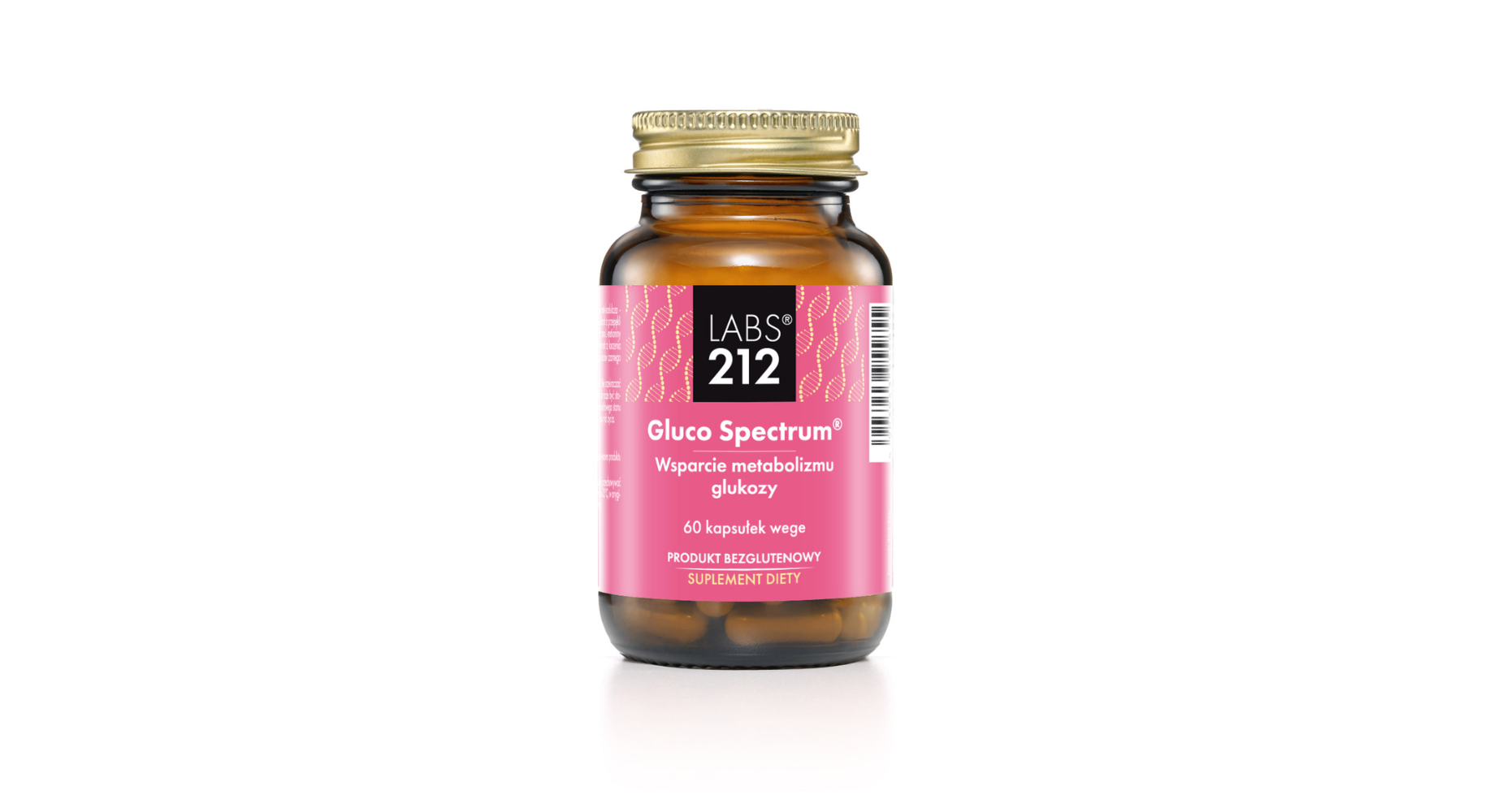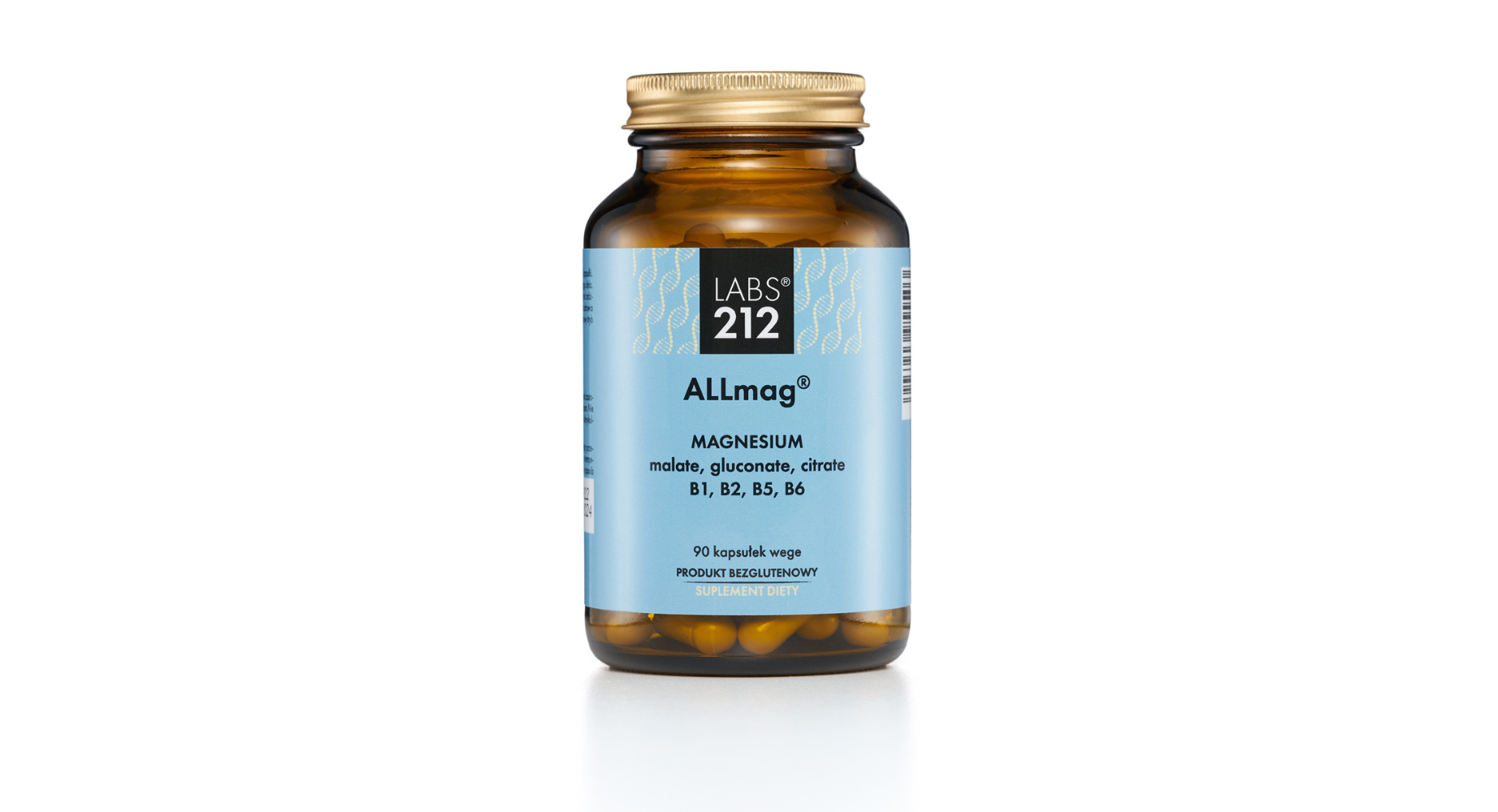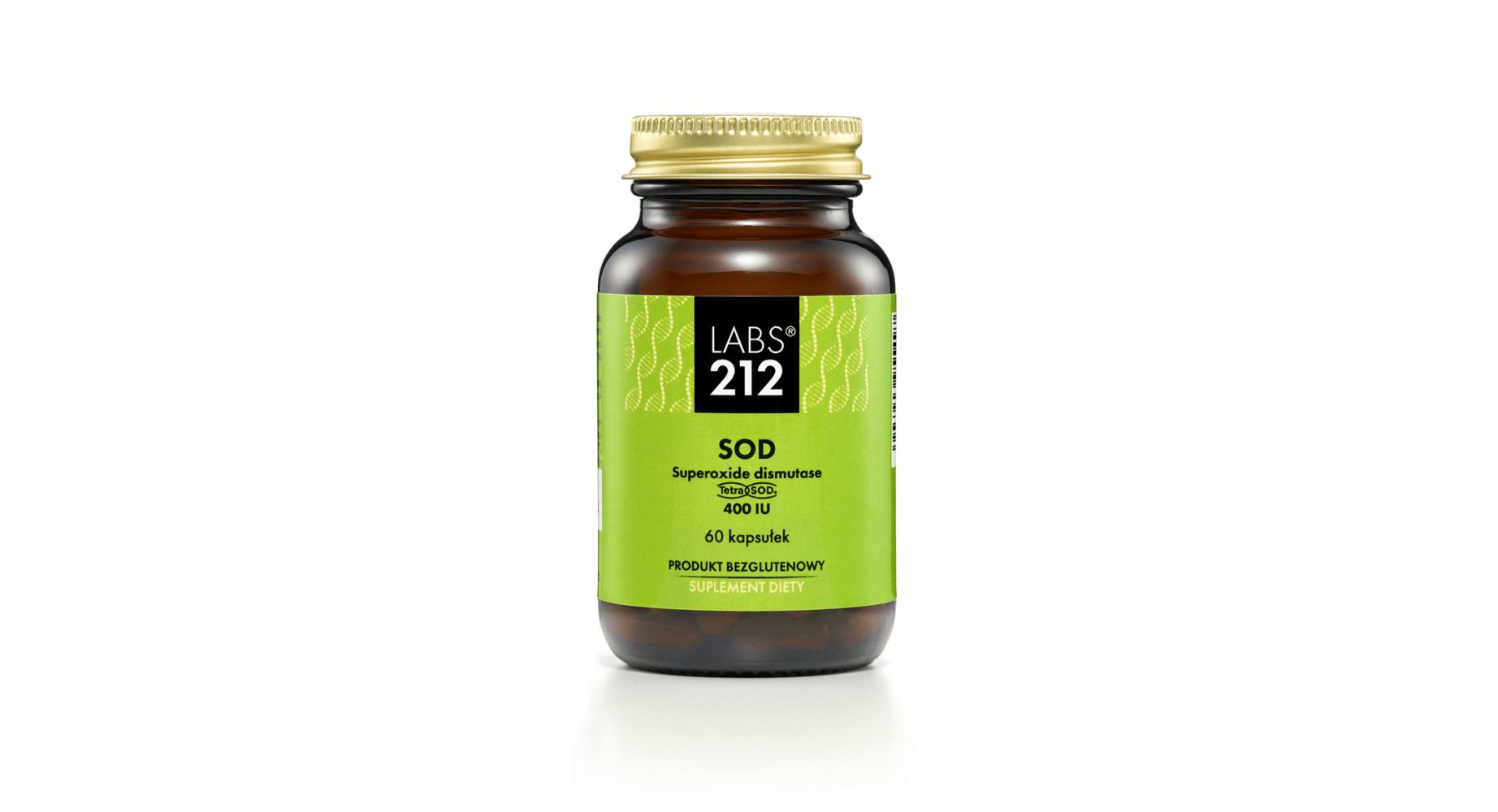Dietary supplement Gluco Spectrum® is a carefully formulated blend of active ingredients that support glucose metabolism.
Gluco Spectrum® contains:
Gurmar leaf extract (Gymnema sylvestre), standardized to gymnemic acids:
- Supports glucose homeostasis by reducing monosaccharide absorption in the small intestine – gymnemic acids may compete with glucose for binding sites on SGLT1 transporters, leading to lower postprandial glucose levels,
- Supports β-cell regeneration and enhances endogenous insulin secretion.
- Improves insulin sensitivity by influencing the expression and activity of GLUT4 transporters in muscle and fat cells.
- Supports key glucose-metabolizing enzymes (hexokinase, glucokinase, glucose-6-phosphate dehydrogenase), promoting energy production via glycolysis.
- May reduce fasting glucose and HbA1c levels, supporting glycemic stability.
- May support weight reduction through effects on fat and carbohydrate metabolism.
Bitter melon fruit extract (Momordica charantia):
- Enhances glucose uptake by activating GLUT4 and improving tissue insulin sensitivity.
- Activates AMPK, increasing glucose and fatty acid utilization.
- Inhibits carbohydrate-digesting enzymes (e.g., α-glucosidase), reducing postprandial glucose spikes.
- Supports β-cell regeneration and insulin secretion.
- Provides antioxidant and anti-inflammatory protection for pancreatic and vascular cells.
Ceylon cinnamon bark extract (Cinnamomum verum), standardized to 10% cinnamaldehyde:
- Enhances insulin receptor activity and signal transmission, improving glucose uptake.
- Promotes GLUT4 translocation to cell membranes.
- Inhibits α-glucosidase, slowing carbohydrate digestion.
- Offers antioxidant and anti-inflammatory effects, protecting pancreatic and vascular tissues.
Inositol (myo- and D-chiro-inositol):
- Both forms support insulin signaling and glucose metabolism.
- Myo-inositol promotes glucose transport into cells by enhancing insulin receptor and GLUT activity.
- D-chiro-inositol supports glucose storage and energy conversion through glycogen synthesis.
Berberis aristata root extract (Rebersa®), standardized to 97% berberine chloride:
- Activates AMPK, promoting glucose utilization and improved insulin sensitivity.
- Reduces carbohydrate digestion and absorption, lowering postprandial glucose.
- Lowers fasting glucose, HbA1c, LDL, and triglycerides.
- Provides anti-inflammatory and antioxidant protection for insulin-sensitive tissues.
β-glucans:
- Slow glucose absorption in the small intestine, reducing postprandial glucose levels.
- Improve insulin sensitivity and modulate immune response, reducing inflammation linked to insulin resistance.
- Support lipid profile balance and overall metabolic stability.
Zinc (zinc L-methionine sulfate monohydrate):
- Highly bioavailable organic form of zinc.
- Supports insulin synthesis and receptor activity in pancreatic β-cells.
- Protects cells from oxidative stress and supports carbohydrate, fat, and protein metabolism.
- Contributes to immune and hormonal balance, indirectly aiding metabolic stability.
Piperine (BioPerine®):
- Patented extract from black pepper, standardized to 95% piperine.
- Clinically proven bioavailability enhancer.
- Improves nutrient absorption and blood flow in the digestive tract.
Chromium picolinate:
- Supports carbohydrate, fat, and protein metabolism.
- Helps maintain normal blood glucose levels by enhancing insulin action.
- Improves insulin signaling efficiency and glucose uptake.
- Promotes stable metabolism under increased glucose load or insulin resistance.
D-biotin:
-
Essential for DNA and RNA synthesis, supporting proper cell function and regeneration.



 Free delivery within Poland from 250 zł
Free delivery within Poland from 250 zł




